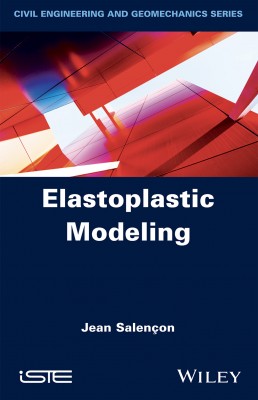
Elastoplastic behavior has long been part of the constitutive models incorporated in most computer codes, used in the design of civil and mechanical engineering structures.
Elastoplastic Modeling offers a compact presentation of the fundamentals of classical elastoplastic modeling, the basis for many engineering applications currently implemented. This book provides a general background to enhance understanding of the modeling assumptions that govern the rationales of these applications. With this understanding comes the ability to assess their validation range and propose possible improvements.
An instructive approach replaces excessive mathematical developments with a semi-phenomenological method, where mathematical modeling is driven by ? and derived from ? experimental observations. A logical track is followed, starting from material behavior modeling and leading to the analysis of the anelastic response of systems, subjected to quasi-static loading processes.
1. Elastic Domains: Yield Conditions.
2. The Plastic Flow Rule.
3. Elastoplastic Modeling in Generalized Variables.
4. Quasi-static Elastoplastic Processes.
5. Quasi-static Elastoplastic Processes: Minimum Principles.
6. Limit Loads: Limit Analysis.
Jean Salençon is a Member of the French Academy of Sciences, the French Academy of Technologies, and Academia Europaea. He is also an Honorary/Foreign Member of the Academies of Hungary, Milan and Lisbon. He is also Senior Fellow of the Hong Kong Institute for Advanced Study (HKIAS). His research interests include continuum mechanics, structural analysis and soil mechanics.